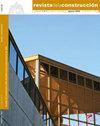Construction sequence analysis of multi-storey setback building placed in slope with p-delta and time-dependent effects
IF 1.4
4区 工程技术
引用次数: 0
Abstract
Analysis and design of the structure are the most critical steps in the pre-construction steps involved. Nowadays, as technology is well developed, there is plenty of software available to carry over the analysis and design of any structures in a short period. In every software, the building model with all storey will be modelled, and loads are applied to the modelled structure on respective members, and their responses will be studied for the whole structure. But in reality, the building will be constructed in sequence as a step-by-step process, i.e., storey after storey with their respective loads, which may produce different responses. This analysis with sequential loading at each step is called Construction Sequence Analysis (CSA). In the present project work, the ten-storey setback building with a built-up area of 25m x 30m placed on the slope of 10°, assumed to be situated in Darjeeling, is modelled in ETABS software. The loads, namely gravity and lateral loads are applied to the developed model. Then the model is analyzed for different loads and their combinations as prescribed by IS codes. The combinations that produce high response are selected and dead load in those combinations are replaced with three modes: CSA without P-Delta effect, CSA with P-Delta effect, and CSA with P-Delta and Time-dependent effects combined. Thus the model is analyzed with these three additional combinations along with selected conventional load combinations. The various comparisons such as storey displacement, and storey drift between these four combinations of analysis were studied, and results were discussed. The building design is also done based on the analysis performed.考虑p- δ和时变效应的斜坡上多层后退建筑施工顺序分析
结构的分析和设计是施工前最关键的步骤。如今,随着技术的发展,有大量的软件可以在短时间内进行任何结构的分析和设计。在每个软件中,将对所有楼层的建筑模型进行建模,并将荷载施加到模型结构的各个构件上,并研究它们对整个结构的响应。但在现实中,建筑物将按顺序逐步建造,即一层接一层地进行施工,其各自的荷载可能会产生不同的响应。这种在每个步骤上按顺序加载的分析称为构造序列分析(CSA)。在目前的项目工作中,假定位于大吉岭的10°斜坡上的建筑面积为25m x 30m的10层后退建筑,在ETABS软件中进行建模。荷载即重力荷载和侧向荷载作用于所建立的模型。然后根据is规范的规定,对不同荷载及其组合进行了分析。选择产生高响应的组合,并将这些组合中的恒载替换为三种模式:无p - δ效应的CSA、有p - δ效应的CSA和同时具有p - δ和时间相关效应的CSA。因此,将这三种附加组合与选定的常规荷载组合一起对模型进行分析。对这四种分析组合间的层间位移、层间漂移等进行了比较,并对结果进行了讨论。在分析的基础上进行了建筑设计。
本文章由计算机程序翻译,如有差异,请以英文原文为准。
求助全文
约1分钟内获得全文
求助全文
来源期刊

Revista de la Construccion
工程技术-工程:土木
CiteScore
2.30
自引率
21.40%
发文量
0
期刊介绍:
The Journal of Construction is aimed at professionals, constructors, academics, researchers, companies, architects, engineers, and anyone who wishes to expand and update their knowledge about construction. We therefore invite all researchers, academics, and professionals to send their contributions for assessment and possible publication in this journal. The publications are free of publication charges.
OBJECTIVES
The objectives of the Journal of Construction are:
1. To disseminate new knowledge in all areas related to construction (Building, Civil Works, Materials, Business, Education, etc.).
2. To provide professionals in the area with material for discussion to refresh and update their knowledge.
3. To disseminate new applied technologies in construction nationally and internationally.
4. To provide national and foreign academics with an internationally endorsed medium in which to share their knowledge and debate the topics raised.
 求助内容:
求助内容: 应助结果提醒方式:
应助结果提醒方式:


